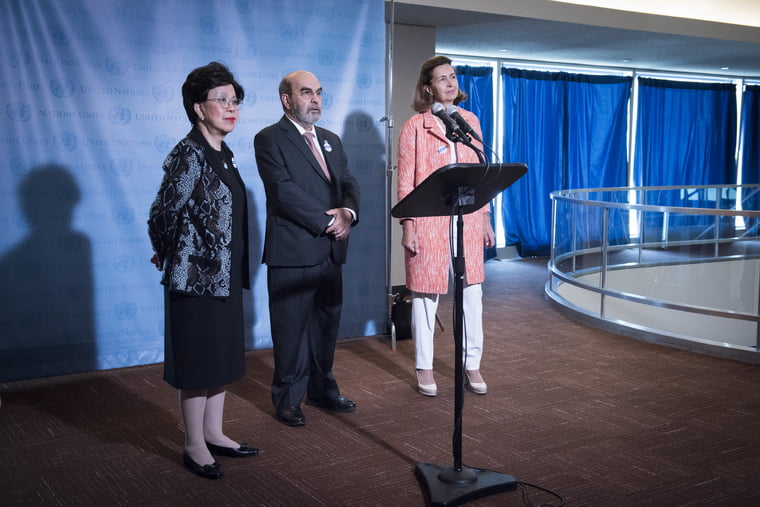More than 700,000 people die each year from drug resistant bacteria. And if present trends continue, that number will skyrocket to 10 million people by 2050. This is roughly the equivalent of the current global burden of cancer deaths.
But wait–it get’s worse!
According to a new report from The World Bank the global economic burden of anti-biotic resistance could equal that of the 2008 global economic crisis and great recession. With that kind of economic hit, you can kiss other key global priorities, like the Sustainable Development Goals, good-bye. “The scale and nature of this economic threat could wipe out hard-fought development gains and take us away from our goals of ending extreme poverty,” the World Bank president, Jim Yong Kim said this week. “We must urgently change course to avert this potential crisis.”


Several high level meetings at the UN and around New York are being held this week try to stop this trend, which is known as antimicrobial resistance, or AMR.
On Wednesday, the United Nations General Assembly held a meeting “to summon and maintain strong national, regional and international political commitment in addressing antimicrobial resistance comprehensively and multi-sectorally, and to increase and improve awareness of antimicrobial resistance.” The fact of this meeting was significant on its own–the General Assembly generally does not focus on health issues. This is only the fourth time in the UN’s 71 year history that it’s done so. (The others included AIDS, ebola, and non-communicable diseases).
The meeting produced a political declaration in which countries pledged to take concrete steps to mitigate this growing crisis. It also endorsed a WHO “blue print” that makes policy recommendations to national governments, and even individual medical practitioners to reduce over prescribing antibiotics. In a joint statement after the declaration was adopted, the heads of the World Health Organization, Food and Agriculture Organization and the World Organization for Animal Health praised the document. “Leaders recognized the need for stronger systems to monitor drug-resistant infections and the volume of antimicrobials used in humans, animals and crops, as well as increased international cooperation and funding,” they said.
Even organizations that are often sharply critical of the UN have embraced this new plan. Medicines Sans Frontieres, for example, hardly bites its tongue when criticizing the UN’s sometimes opaque decision-making processes. But on the night before the document was adopted, the head of the MSF Dr. Joanne Liu addressed a small gathering that included several top UN officials, Jim Yong Kim of the World Bank, and WHO director Margaret Chan to offer her praise. (“I was told I’m not allowed to yell at you,” she joked as she took the mic.)
After the declaration was formally adopted, MSF sent out this statement.
“MSF welcomes the UN’s Political Declaration Antimicrobial Resistance, which recognizes the need to address – at the highest political levels – the complex issue of drug-resistant infections, which affect people in every part of the world. Now, governments have the responsibility to turn these words into action and fully implement nationally-tailored plans and global commitments to combat AMR…
“MSF is encouraged to see that this declaration builds on the UN’s recent High Level Panel Access to Medicines report in recognizing the failures of the current medical research and development system, and by incorporating strong public health commitments to try to ensure that the new antibiotics, vaccines and diagnostics we urgently need to curb bacterial resistance are available and affordable for those who need them most. We’re also pleased to see this declaration calls for breaking the link between the cost of research and development (R&D) and the price that companies charge for lifesaving medical tools, and for making sure there is a public return when public funding is used to create new products.”
This issue is gathering such momentum because the international community is finally coming to grips with the enormity of the problem.
Dr. Keiji Fukuda, an assistant director general at the World Health Organization, likened the current trend to the early days of the AIDS crisis in the 1980, when officials were just starting to come to terms with the idea that HIV could become a global pandemic.
“Around the world, we are beginning to see that the infections we are worried about on a day to day basis are untreatable, he said. “These are not esoteric infections — we are talking about pneumonia, UTI’s, and tooth abscesses. It’s an amazing broad range of infections. And because of that it’s as relevant for Asia as Kansas.”
At the UN, it appears that officials are learning from past mistakes and taking on this issue before it becomes a full blown crisis. It would seem that some officials are taking to heart that an ounce of prevention is worth more a pound of cure–so long as the prophylactic is not an antibiotic that you don’t need.
